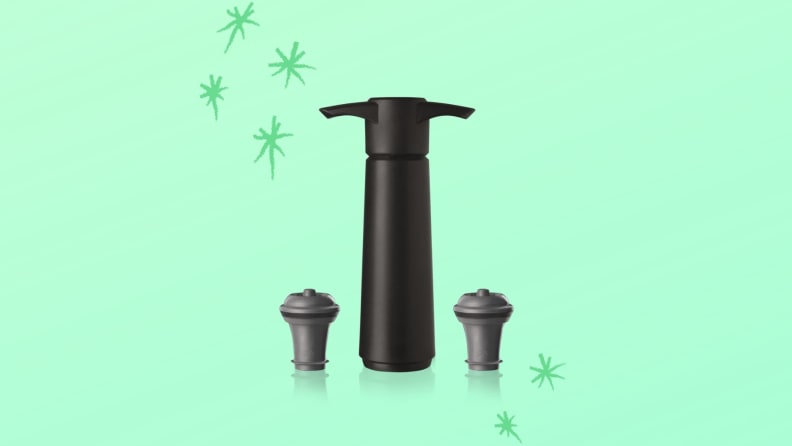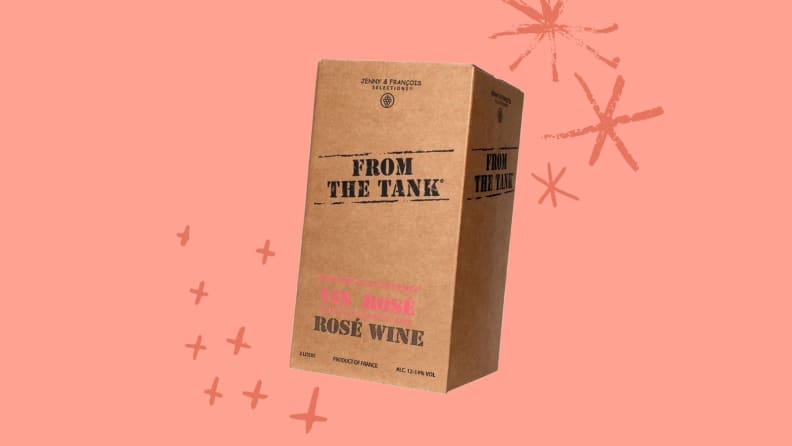How to save money on wine, according to a sommelier
And we're not suggesting you go for the bottom of the barrel.
Products are chosen independently by our editors. Purchases made through our links may earn us a commission.
To state the obvious, wine can be expensive, and not just because one too many glasses may fuel late-night online shopping sprees. But beyond finding a bottle that is within your budget, there are a few other tips for saving money on wine, too.
Certified sommelier Elizabeth Schneider, author of Wine for Normal People and host of the podcast by the same name, shares her expertise for cutting down on costs. The ultimate reason is simple: When you save money on wine, you can buy even more of it.
Learn a little bit about wine
Your job isn’t to know everything—leave that to the professionals. But learning a little bit can go a long way. “The more that you know about wine, the better off you will be in terms of saving money,” Schneider says. “Get some lingo down. Figure out some basic things that you like, but sometimes it’s more important to know what you don’t like.”
Wine, Schmeiner reminds, is about pleasure. Armed with even rudimentary knowledge, you’re more likely to end up with a pick you’ll enjoy. Take a stab in the dark—like shopping for the most ’grammable label—and you very well may end up suffering through it because you already paid for it, or even pouring the wine—and your money—down the drain.
There are some extra budget-friendly ways to pick up wine knowledge, like subscribing to a podcast or sampling at wine stores. You can pick up a book—even swing by your local library—or sign up for an online class.
Find an unstuffy wine shop
Track down a place where you’re comfortable walking in and chatting with the pros, and you’ll be a happier customer. They’ll know a lot more than you, but should never make you feel that way.
“It’s like dating,” Schneider explains. “You gotta date around. You’ve gotta see if they’ve got your vibe and there’s someone nice.” If it’s not an approachable environment, feel free to walk out and take your wallet elsewhere, Schneider says, who has done just that.
Once you have an idea of what you like—and what you don’t like—you can pass on that knowledge. When you return, share whether or not you enjoyed the previous recommendation. If not, that’s useful information to go back to the drawing board and get closer to something you will enjoy.
Another tip: Don’t be afraid to say you’ve got around $15 to spend for a casual night in with a frozen pizza. “There’s something at every price point,” Schneider says.
Store wine bottles properly
Whether you’re buying one bottle or a dozen, make sure that it’s ripe for consumption once you decide to pull the cork. Not all of us have a dedicated wine fridge at home, but we can mimic that environment.
“Wine is a product of agriculture,” Schneider emphasizes, “and it is incredibly sensitive to a lot of factors that can make it taste bad.” First, keep it out of direct light, whether artificial or sunlight, which breaks up the chemical compounds.
Schneider has listeners in New York and other cities where space is a luxury, and they store wine under their beds or in a closet—even inside a cardboard box or bag—as long as it’s not too hot. Be mindful of temperature and humidity, too. “You have to keep the cork slightly moist, which is why we store the wine on its side.”
Order this inexpensive gadget

Get pumped: The VacuVin squeezes a few more days out of a bottle of white wine.
So, you’ve walked into a shop, told them what you enjoy in a bottle of wine, kept it out of harm’s way, and finally opened it up. Now it’s a race against the clock, as you’ve just exposed your wine to oxygen.
How long does an uncorked bottle last? Well, shelf life largely depends on many factors, including the quality of the wine. “Things with tannin are going to last a lot longer because they need air to get better,” Schneider says. “Riesling you could leave in the fridge for a week because the acidity is a good preservative.”
But, generally, Schneider says, “People write off wine way too soon.” It comes down to tasting it to determine whether it’s OK for drinking, should be used for cooking, or it’s past its prime.
Simply recorking your wine and putting it in the fridge “stops the degradation of the wine,” according to Schneider. For a few extra miles—or when you’ve misplaced the cork—she also uses a VacuVin with her whites. This $15 vacuum pump sucks out oxygen and seals the bottle with a silicone stopper. (When it comes to bubbly, you’ll need a different gadget.) Alongside my Duralex mixing bowls and Nordic Ware baking sheets, it’s one of the most used tools in my kitchen.
For a certain type of wine drinker, it may even be worth investing in a Coravin, a preservation tool that lets you pour a glass without pulling the cork. (Schneider cautions to use it only with regular corks, not synthetic ones.) With the recent models running a few hundred dollars, “It’s expensive,” she admits. She also adds: “It is worth it. [A bottle] will last a few weeks, and there’s no pressure. Short term, it is a huge hole in your pocket. Long term, the cost-benefit analysis for that, it probably pays for itself in six months.”
Schneider says even an older model that costs half the price will do the trick.
Buy a case
Obviously, shelling out for 12 bottles is more pricey on the front end. But sellers will typically knock off a percentage when you buy in bulk, and some offer half-cases at a discount, too. This tip, however, comes with a caveat.
“You can't rely on someone else to pick out that case of wine for you because they have no idea who you are, what you like, and where you are in your wine journey,” Schneider explains. “You might not be ready for some of the things they offer, or you may be past them. Twelve bottles is not a good investment unless you're experimental.”
And remember, you'll need the space to properly store them.
Give boxed wine a chance

Twenty glasses of wine at your fingertips—and at a decent price.
The pandemic brought a lot of changes to our lives. One of them: Everyone was grabbing boxed wine. But this trend has staying power beyond quarantine: A single oenophile may also find it a suitable choice for weeknight enjoyment, or even entertaining a crowd or taking it on the go while camping.
“For an everyday wine drinker who’s not looking for specialty bottles every night, it’s a great option. It’s sort of like having wine on tap,” Schneider says.
Because the wine is stored in a plastic pouch without oxygen, it’ll last much longer than an opened bottle of wine—though you’ll still want to keep it away from light and extreme temperatures, and take note of the expiration date, too.
Then there’s the price. Boxes usually come in three liters, equivalent to four bottles—or 20 glasses—of wine, and are priced under $30. Talk about value.
Sure, the boxed stuff has a bad rap—in some cases, not undeservedly—and it will limit your choices when it comes to quality wine. That local wineseller you’ve started chatting with? Ask them for suggestions. Some of my trusted retailers stock From the Tank, Cantina San Giacomo, and Le Clos des Jarres.


